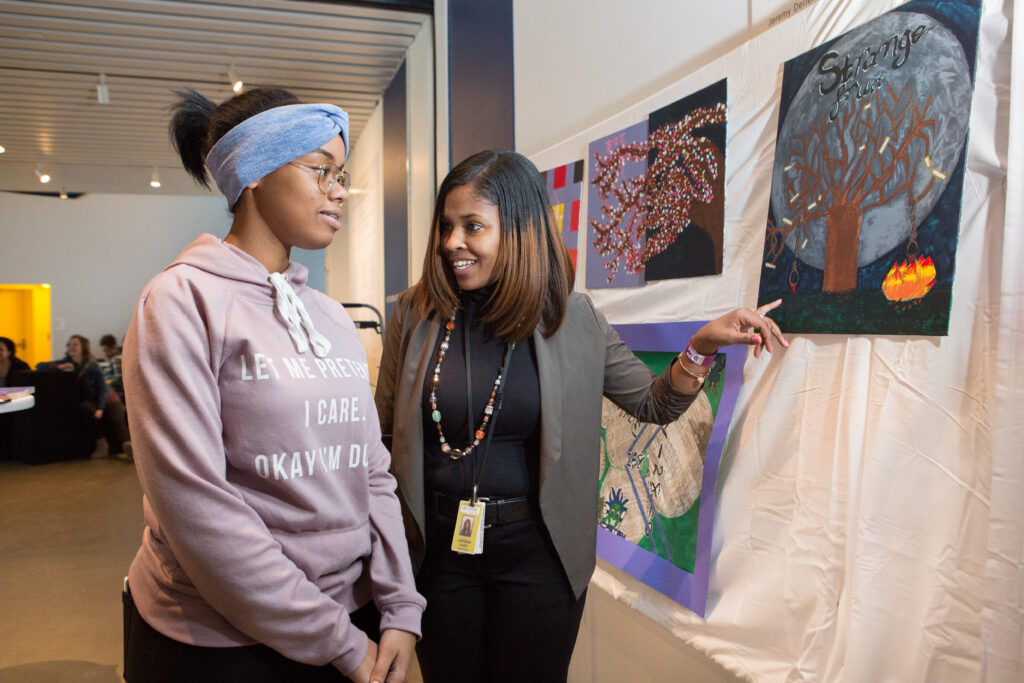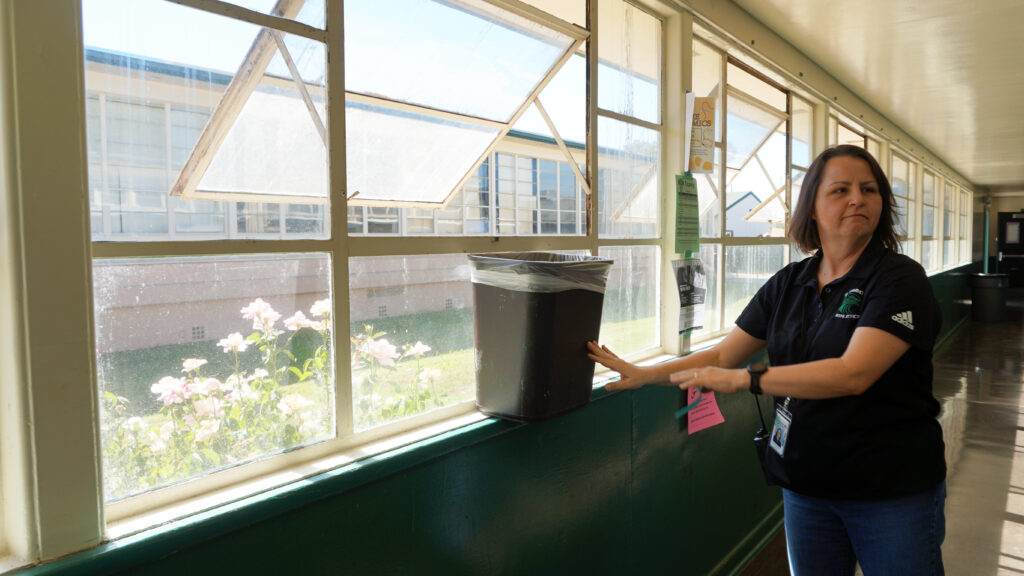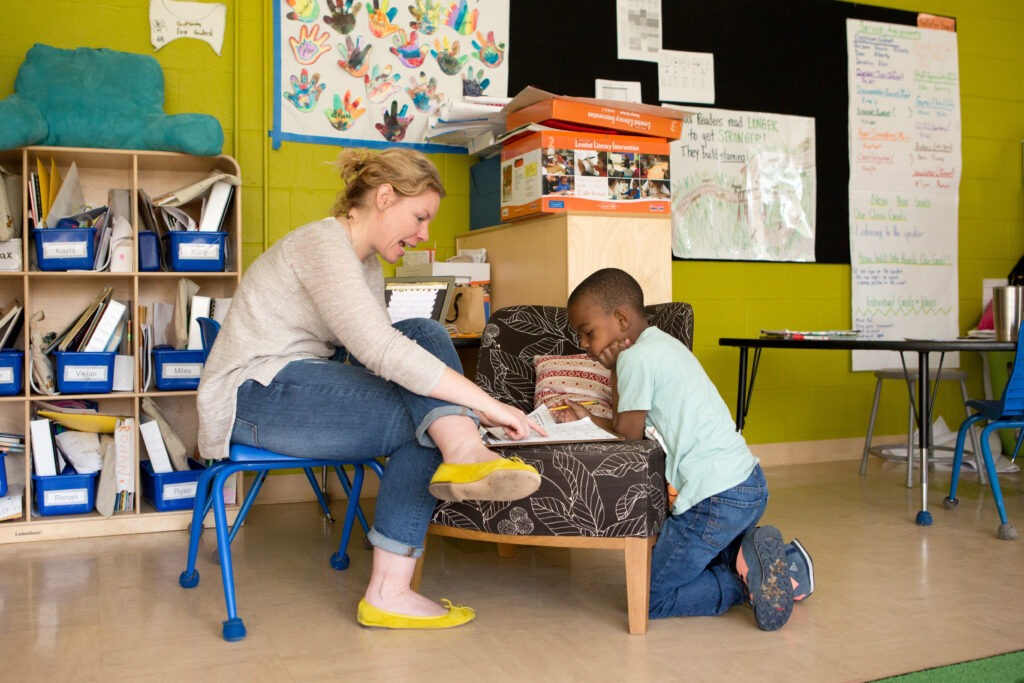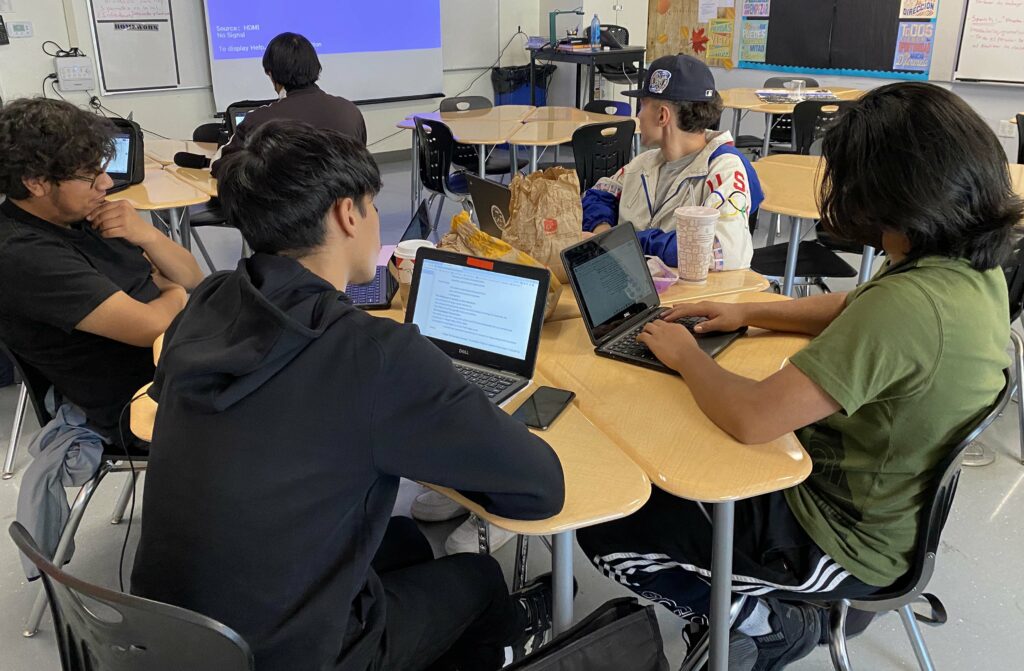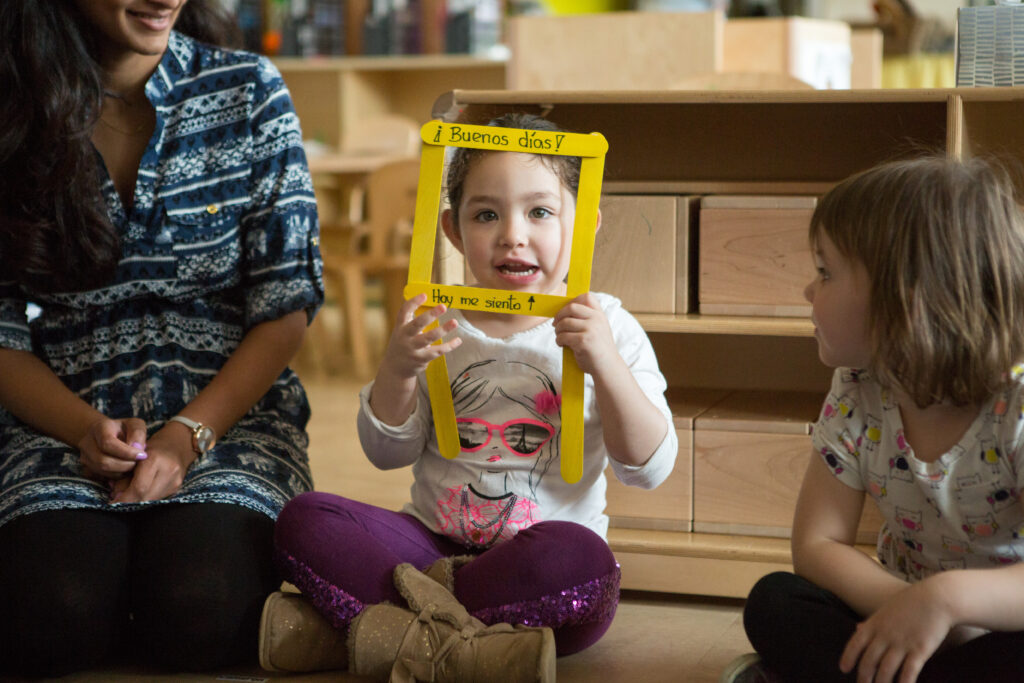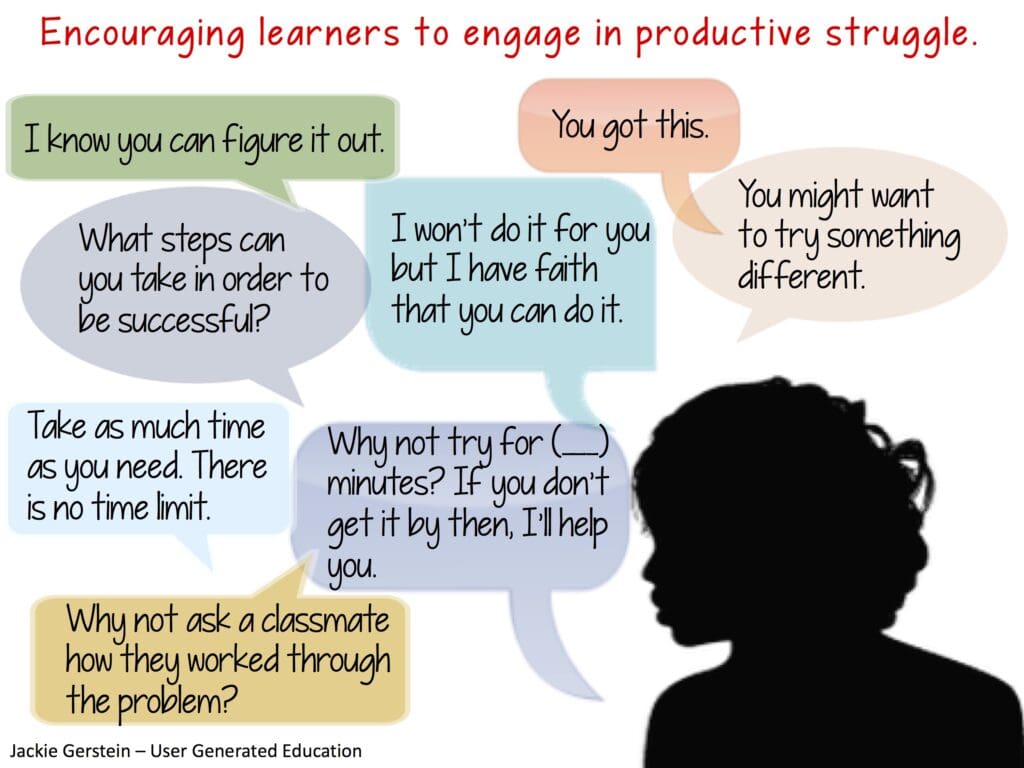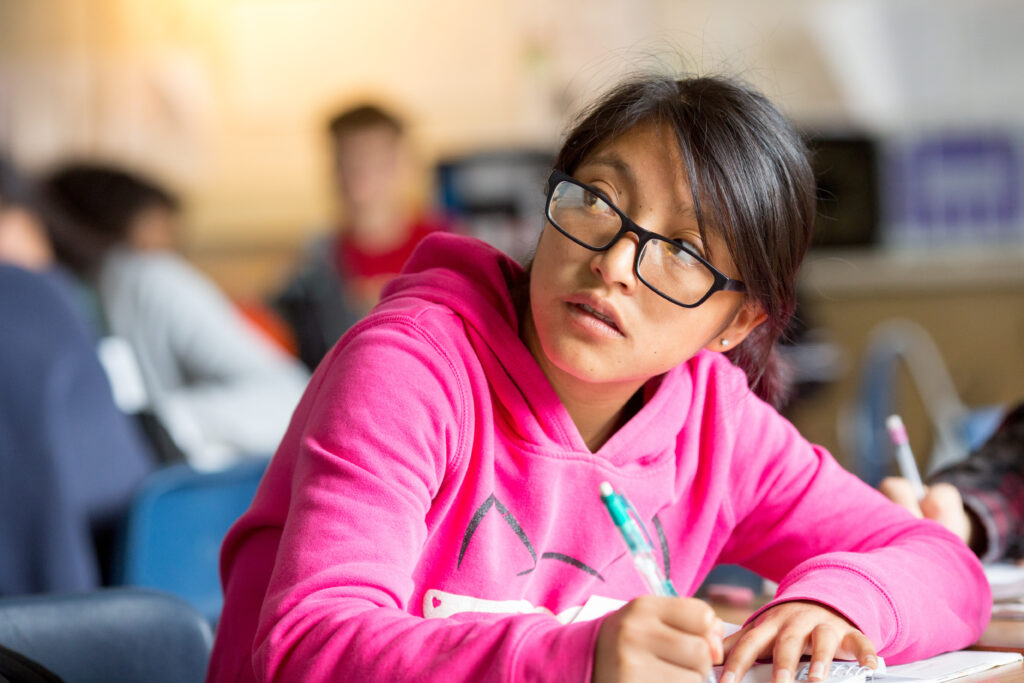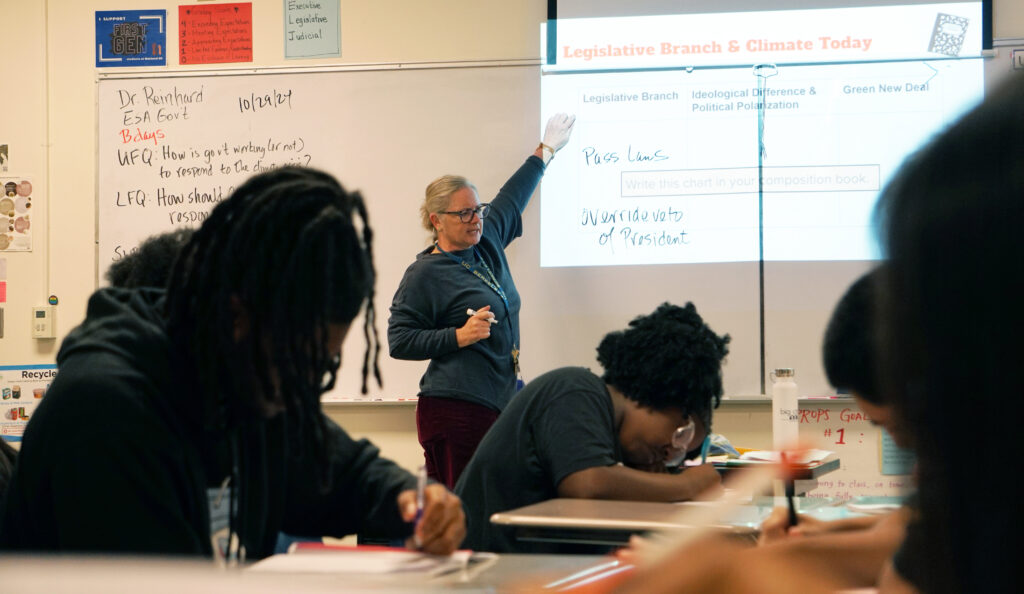
Credit: Allison Shelley for American Education
Este artículo está disponible en Español. Léelo en español.
Younger Black and Latino teachers are some of the most passionate educators in the Los Angeles Unified School District — and they are also at the highest risk of leaving the profession, according to a new report.
The survey, which involved interviews conducted in early 2024, found that roughly one-third of Gen Z Black and Latino teachers expect to leave their careers in education. Seventy-one percent of those teachers said they expected to do so within two years, either to find a higher paying job or seek a position with a better work-life balance.
“I thought I would be a teacher forever,” said a Latina high school teacher quoted in the survey report. “I feel very confused and sad that I have to consider leaving something that I’m very passionate about and very good at, and I work so hard at.”
LAUSD has made several efforts to boost both pipelines into teaching professions for current students of color and to help teachers already in the district stay where they are, according to Jacob Guthrie, the district’s director of recruitment, selection and retention.
“Having a representative workforce means better outcomes for students,” he said in an interview with EdSource. “And the district is committed to providing pathways and support for our Gen Z educators of color so that they can feel supported and they remain with us as district employees.”
The survey and report were conducted and written primarily by GPSN, a local nonprofit that seeks to help improve public education in Los Angeles, with a focus on students of color and students living in poverty.
The work involved a series of focus group discussions conducted in November 2023, and individual surveys with 400 district educators in early 2024. The teachers surveyed were split into two, 200-person groups: Gen Z Black and Latino teachers and a general educator population, which included teachers of all backgrounds. Their responses to a series of questions were analyzed side by side.
According to the study, providing affordable health care options and improving work-life balance would make the biggest difference in LAUSD keeping its younger Black and Latino teachers.
And advocates say doing so is critical as concerns grow about retention and diversity among the future teacher workforce in Los Angeles Unified.
“If we don’t get really serious about the things that they’re raising … in this report, then we have a gap that we are widening, and we might lose some of some really high-quality teachers in the pipeline,” said Jalisa Evans, the founder and CEO of the Black Educator Advocates Network.
Why are younger Black and Latino teachers less likely to stay in LAUSD?
A quarter of the report’s Black and Latino respondents who are Gen Z, defined as under the age of 30, said they would leave education in pursuit of a higher-paying job. Meanwhile, 27% said they wanted more work-life balance.
Burnout was also of concern for nearly a third of Gen Z Black and Latino teachers, the report found — and Evans said “for folks to be newer into the field and already experiencing burnout is a huge sign that there’s not sustainability.”
“Burnout specifically has been normalized. And so, for more veteran teachers, it is normal for them to take work home. … It is normal to think that you’re actually supposed to lesson plan at home,” Evans said. “And so, I think newer educators, specifically Gen Z, Black and Latino teachers, they’re experiencing this burnout, and it wasn’t their interpretation of what they were getting into.”
In addition to a desire for work-life balance, high costs of housing and living play a key role in younger Black and Latino educators’ desire to leave the district, particularly if they live in an area that is rapidly gentrifying and further from the communities they teach in.
Gina Gray, an English teacher, said the topic of affordability comes up frequently among her fellow teachers — with some who are younger having to live with several families under the same roof to sustain themselves financially.
“With this much education, with this much skill and knowledge, if you go into another field, you will make more money, but we’ve accepted this wage penalty for educators,” Gray said.
“And so to be new and starting out and wanting affordable housing and realizing that the career I’ve chosen has made that where it seems impossible? Do I stay in the career, or do I kind of validate things for myself?”
Does gender have an impact?
While the report did not specifically focus on gender, Ana Teresa Dahan, GPSN’s managing director who helped author the report, noted that gender is tied to retention.
She emphasized that a lot of younger women leave teaching because they no longer feel the job is conducive to having a family; and, because education is still largely female dominated, Dahan said that exodus has a larger impact on the younger workforce as a whole.
“We heard in our focus groups, teachers (saying): “I can’t drop off my kid at school before 7:45, but I have to be at my school by 7:30,’ ” Dahan said. “There’s logistical challenges to being a teacher and then also raising children that I think are being voiced more than previous generations.”
Many have also stressed the need for more male teachers of color in the district.
What positive feedback did Los Angeles Unified receive?
Many have applauded LAUSD for its “grow your own” model of hiring former district students.
Specifically, one-fifth of the teachers surveyed in the GPSN report had formerly attended LAUSD and said they wanted to give back.
“They go off, they go to college … and they see education as a way to transform their community,” Dahan said. “And that’s why they’re becoming teachers, because they want kids in their communities to have the opportunities they did. That, we thought, was really compelling.”
Forty-four percent of Gen Z Black and Latino educators said they wanted to share their love of learning, while 40% wanted to pursue teaching because they were passionate about a subject area.
According to the report, more than 85% of district educators also said they feel their individual identity is reflected in their fellow staff and student populations. Most also noted the district had been supportive and helped them grow professionally.
What are the current supports for younger Black and Latino educators?
Guthrie said LAUSD provides a number of opportunities to support retention and career development, including creating pathways for high school graduates to get a teaching credential and programs that support teachers in getting administrative services credentials at no cost.
This year, the district has also unveiled a program to help increase pathways into careers in education for students at Black Student Achievement Plan campuses.
And for teachers already in the district, Guthrie said LAUSD has been providing special training to administrators on supporting educators of color — and so have career ladder specialists, who can mentor teachers wanting to move up.
He also mentioned that the district formed affinity groups for both Black male and female teachers, which will meet six times this year.
Why is addressing retention important now?
Parents, students and teachers have all stressed the importance of having a body of teachers that reflect their student populations.
Maira Nieto has four children attending LAUSD schools — spanning from fourth through 10th grades. She said having Latino teachers who can be culturally understanding is critical, for both students and for parents who want to be more involved with their children’s education.
“They are young children; they have to feel at home, like they are welcomed,” Nieto said in Spanish. “If a teacher doesn’t provide them with that, the child, I think, loses interest at an academic level.”
Many have also emphasized that younger teachers of color are critical, as they represent the future of Los Angeles’ educator workforce.
“That’s a little frightening,” Gray said, “to think that some students will go through the whole system and possibly not have … a teacher they can identify with.”
What other kinds of workplace support would help?
Providing affordable health care options and improving work-life balance would make the biggest difference in keeping Gen Z Black and Latino educators in LAUSD, according to the report. Other respondents called for receiving incentive bonuses earlier and having improved family leave.
Many teachers in the survey also said they wanted more professional development focused on social-emotional learning strategies, and more than half reported dealing with behavioral issues in the classroom — a burden sometimes disproportionately placed on teachers of color, Evans said.
“Are they being overly used in a way that is just based off of their identity? Are they having to carry the burden of being the school’s disciplinarian?” Evans said.
“And if so, LAUSD should definitely look at their school leadership to think about how they can support all staff members to be able to build relationships with their students and to be competent in this idea of classroom management.”
While LAUSD does provide Black educator networks for both men and women, Gray said affinity spaces provided by the teachers union, United Teachers Los Angeles, have really made all the difference.
Meanwhile, Guthrie said he is “not aware” of similar networks for Latino teachers.
“The districts, the school sites, they need to be intentional about retaining teachers of color … making sure that sometimes how our students feel othered, that we don’t feel othered on these same campuses,” Gray said.
“Be intentional with it. Be focused on it. Understand that we need support in order to sustain the career, and we want to stay.”
